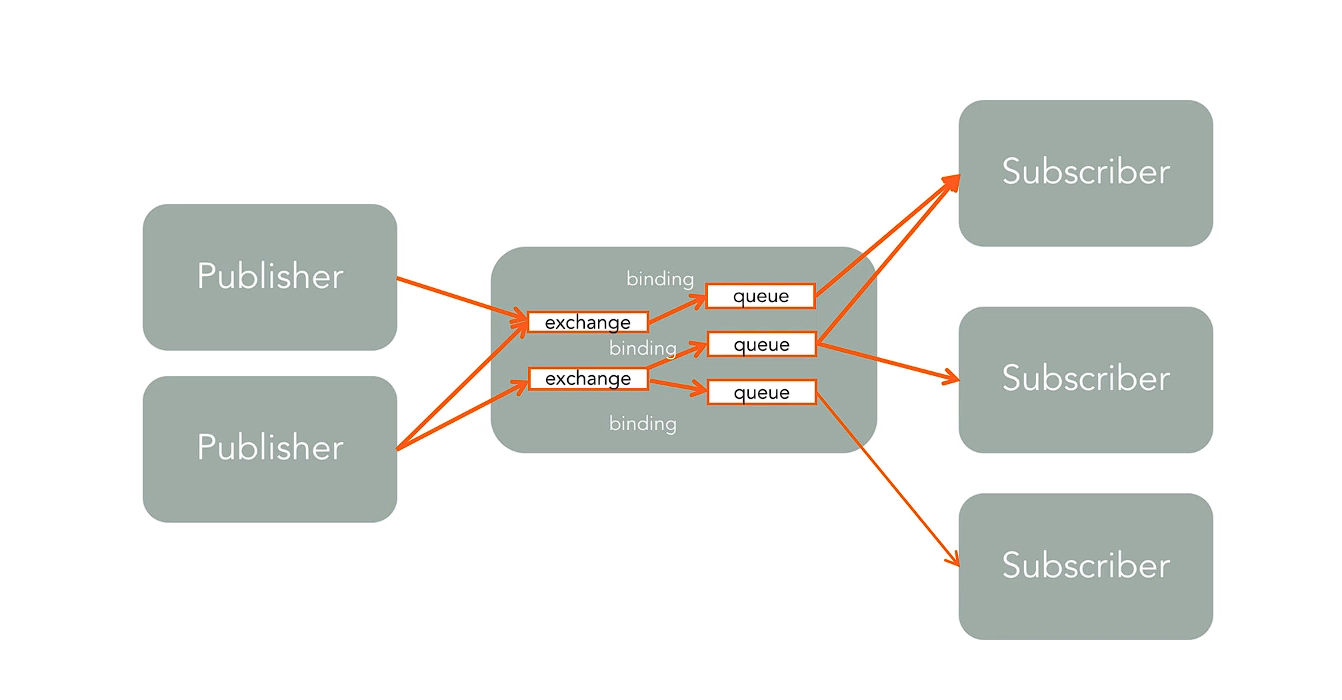In the world of messaging systems and queuing protocols, RabbitMQ stands tall as a powerful open-source message broker. Let’s dive into the top-notch features of RabbitMQ and unveil the architectural marvel that it represents.
Table of contents
Open Table of contents
Sections
RabbitMQ: A Community-Driven Message Broker
RabbitMQ is not just any message broker; it’s an open-source gem crafted by a thriving community. As a renowned example of a message-oriented middleware, it plays a pivotal role in facilitating efficient communication across diverse applications and systems.
Why RabbitMQ Stands Out:
-
AMQP Implementation: RabbitMQ boasts the title of the most popular implementation of the Advanced Message Queuing Protocol (AMQP), a testament to its widespread adoption and versatile capabilities.
-
Interoperability: One of RabbitMQ’s core strengths is its ability to interoperate seamlessly with other messaging systems. It embraces different AMQP providers, allowing you to plug and play applications built on various languages with the RabbitMQ broker.
-
Erlang Powered: Behind RabbitMQ’s high throughput and low-latency performance lies the Erlang programming language. Erlang’s robust capabilities serve as the foundation for RabbitMQ’s message broker technology.
-
Clustering for Resilience: RabbitMQ supports clustering, a vital feature for both fault tolerance and scalability. You can cluster multiple RabbitMQ brokers to create a highly available and scalable messaging system, a common practice in messaging systems.
-
AMQP Magic: RabbitMQ, utilizing the AMQP protocol, defines essential concepts like exchanges, queues, and bindings, forming the backbone of its queuing mechanism. These concepts are fundamental to understanding RabbitMQ’s architecture.
-
Multiplexing Channels: RabbitMQ offers a clever solution to avoid the overhead of opening numerous TCP connections. It allows multiple connection channels within a single TCP connection, optimizing network bandwidth and reducing connection management complexities.
The RabbitMQ Architecture Unveiled
Now, let’s peek under the hood of RabbitMQ’s architecture to understand how it orchestrates the flow of messages:

Publishers and Their Role
Publishers, as the name suggests, are responsible for publishing messages into RabbitMQ. These messages are sent to an exchange, which acts as a routing point. In RabbitMQ, you might encounter default exchanges or custom ones you define based on your application’s needs. The heart of the publisher’s work lies in delivering messages into these exchanges.
Subscribers and Their Role
Subscribers, on the other hand, are the eager listeners awaiting messages. They are interested in specific topics or keywords within the messages. Subscribers can be configured to listen to particular queues, which are, in essence, the mailboxes where messages are temporarily stored. These messages come from the queues via bindings, which act as connectors between exchanges and queues.
The Exchange and Queue Dance
Messages, once published into exchanges, are delivered to queues through bindings. Bindings define the relationships between exchanges and queues, allowing messages to flow seamlessly. The magic happens when you realize that a single exchange can be bound to multiple queues, enabling messages to reach various destinations simultaneously. Subscribers, however, interact solely with queues, unaware of the exchange intricacies.
This high-level overview encapsulates the essence of RabbitMQ’s architecture, illustrating the roles of publishers, exchanges, and subscribers in orchestrating the message flow.
Conclusion
RabbitMQ is a robust and versatile message broker, born from the collaboration of a dedicated community. With its AMQP implementation, Erlang foundation, clustering capabilities, and advanced features like multiplexing channels, RabbitMQ provides a reliable and efficient messaging platform.
Understanding its architecture, with publishers, exchanges, and subscribers playing pivotal roles, lays the foundation for leveraging RabbitMQ’s full potential. In subsequent explorations, we will delve deeper into RabbitMQ’s inner workings, including practical implementations and use cases. RabbitMQ’s versatility makes it a valuable asset in the world of messaging systems, and we’re just scratching the surface of what it can achieve.